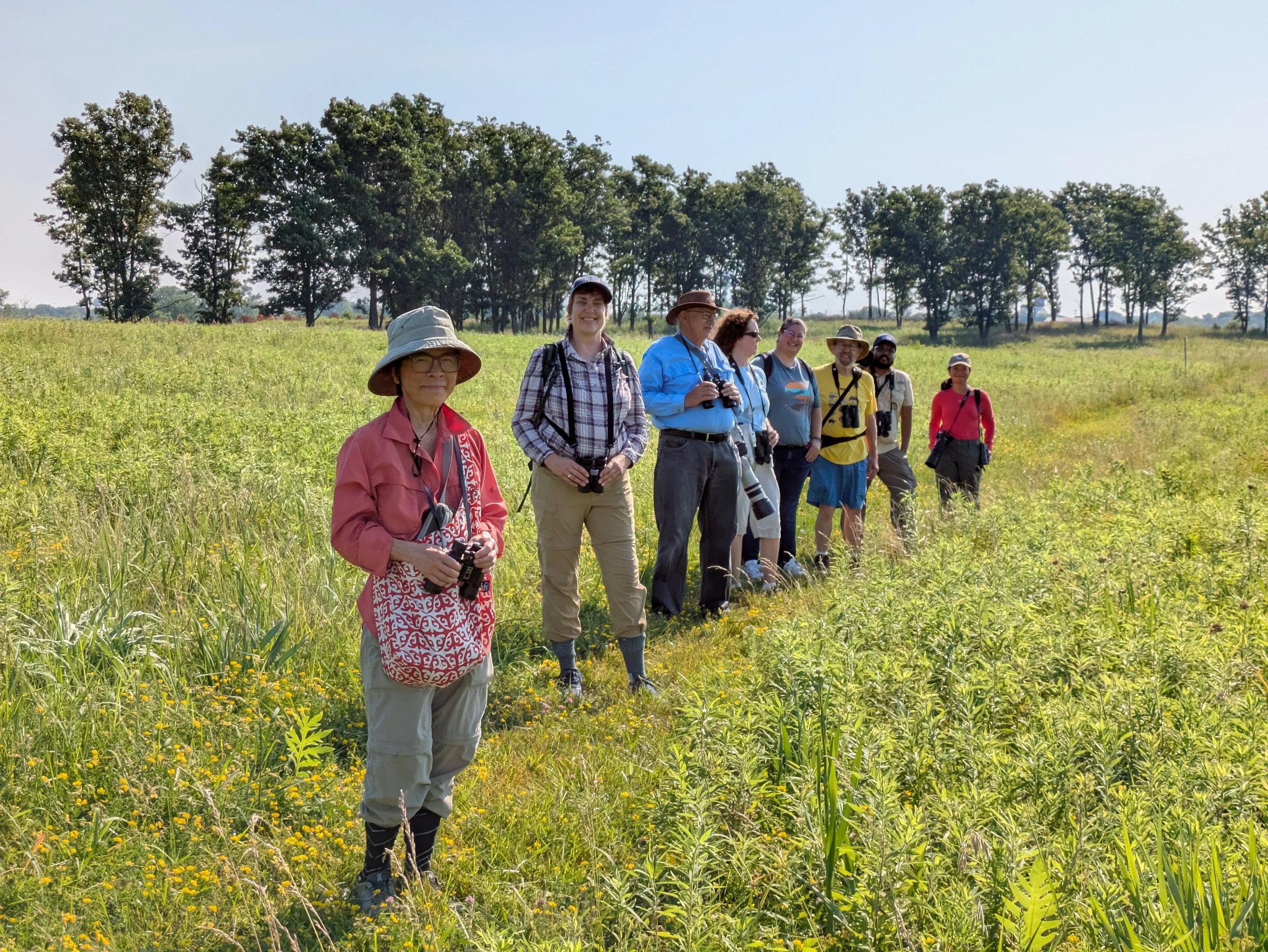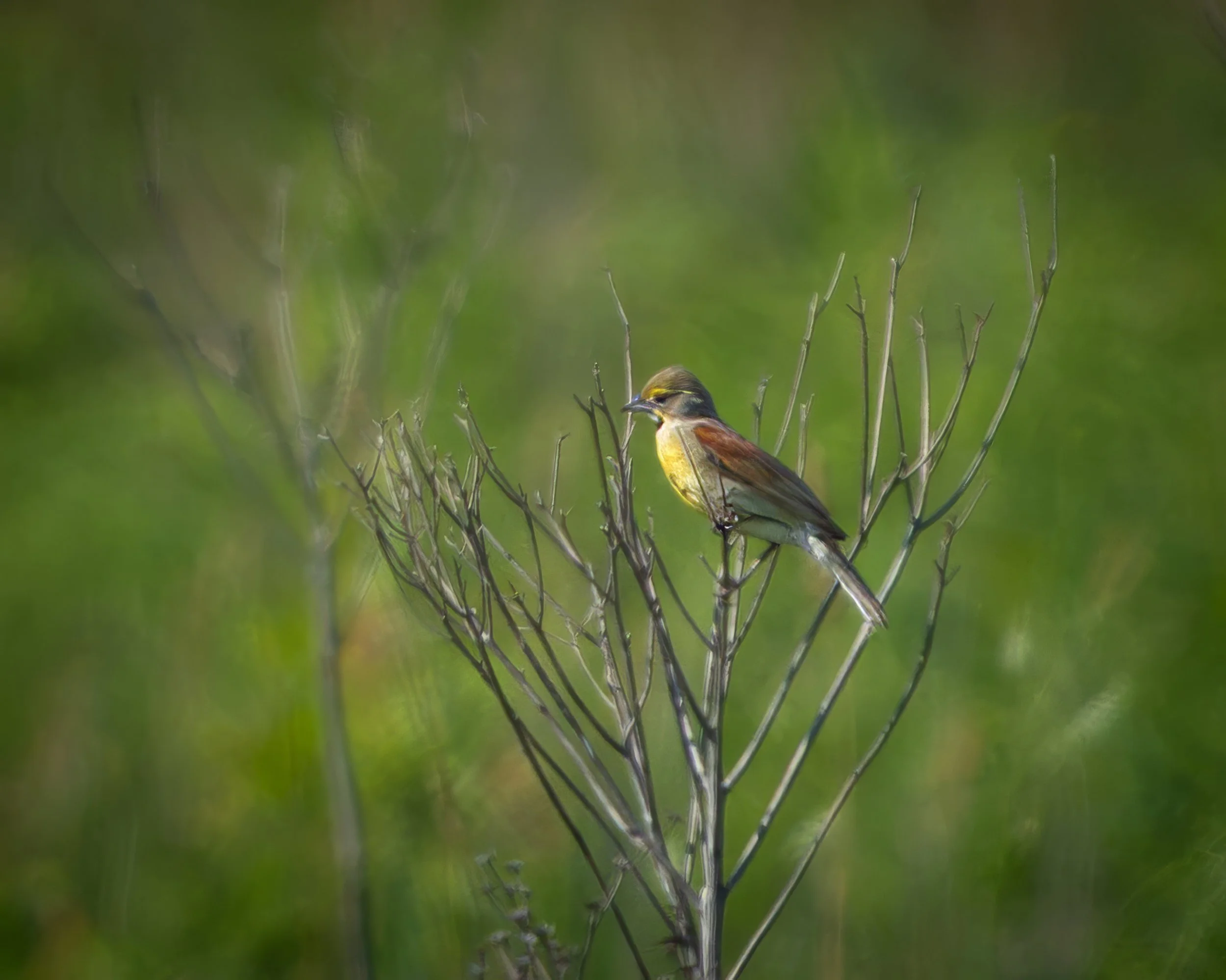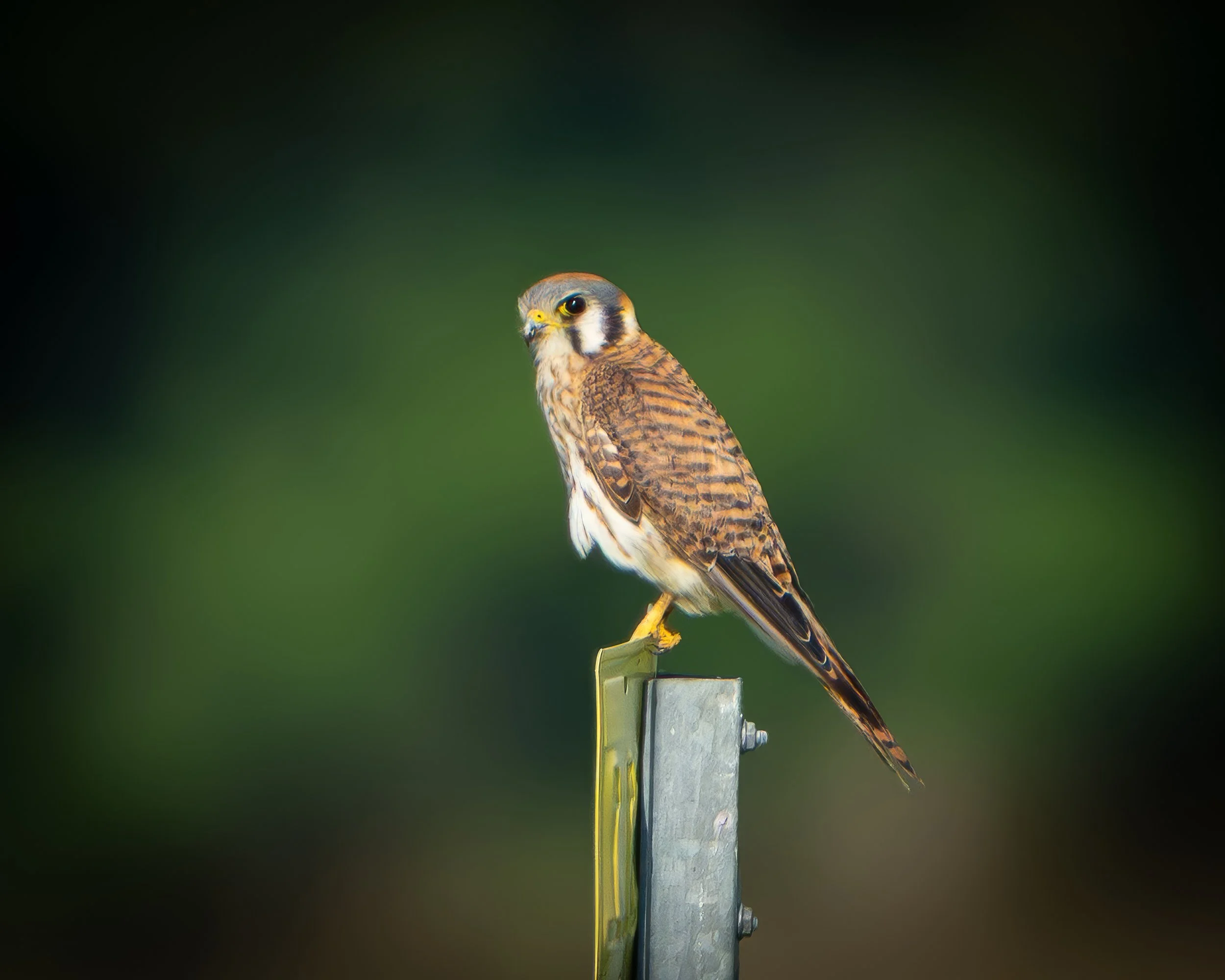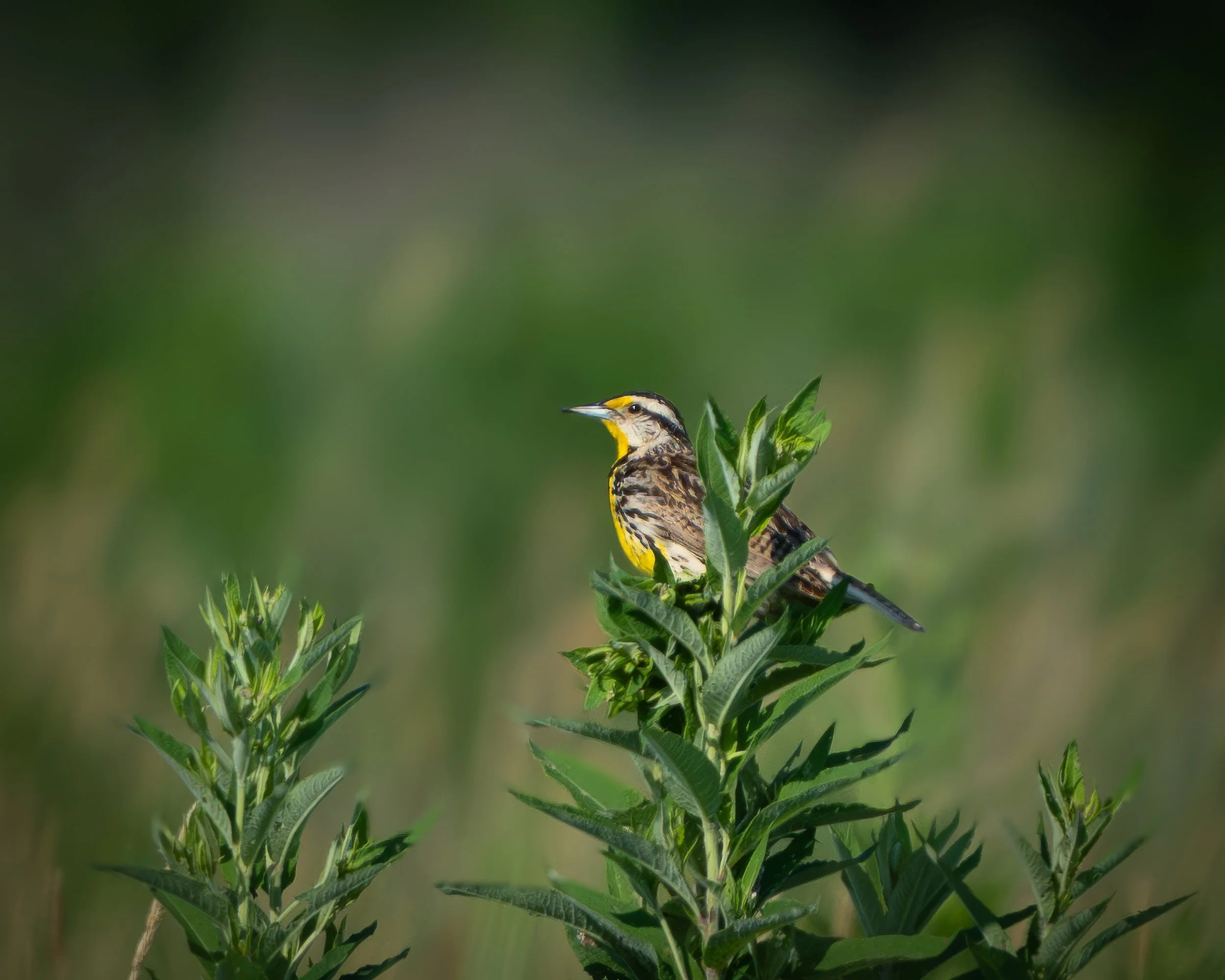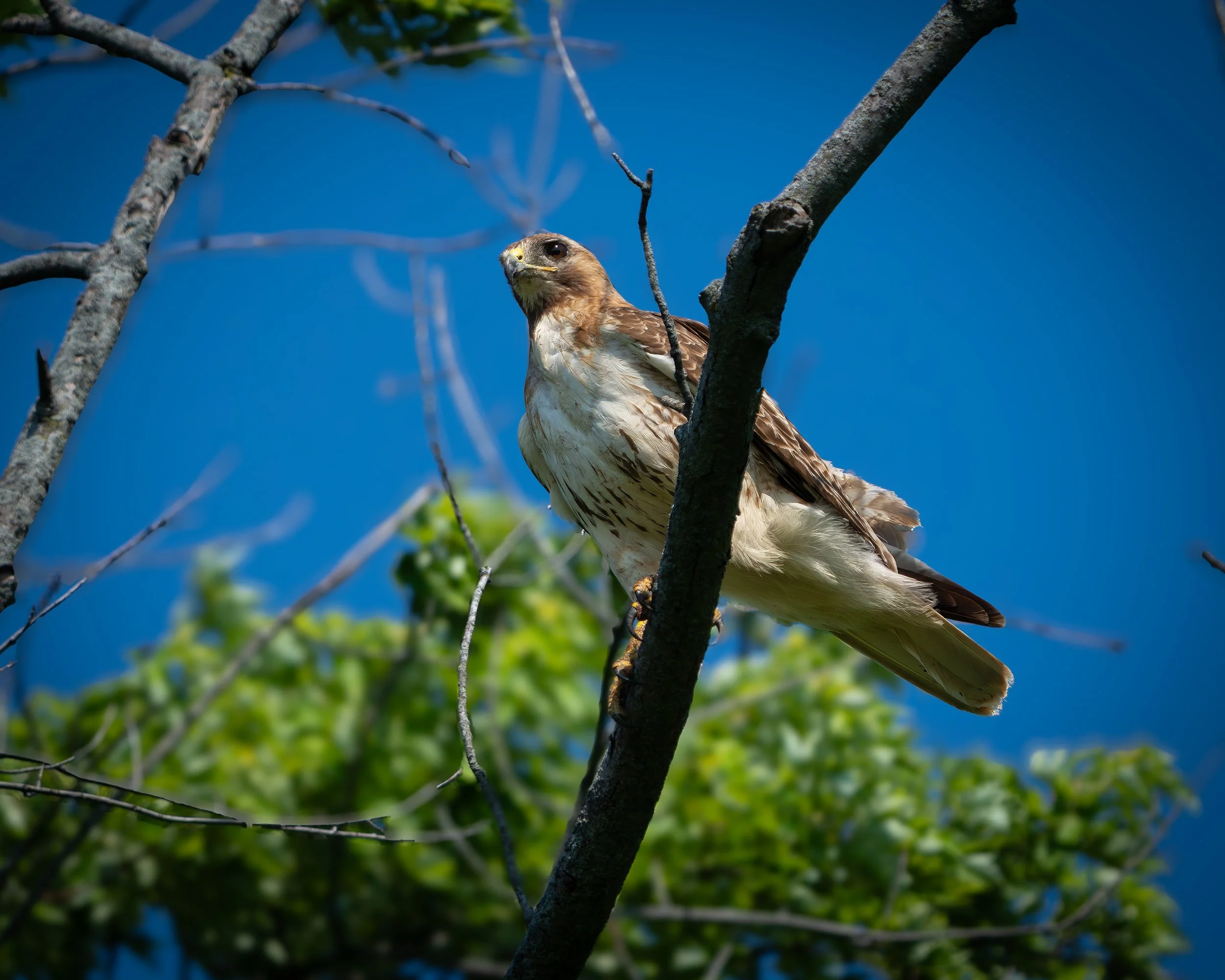Field Trip Recap: Orland Park Grasslands
Words by Kris Hansen
It was already warm and getting warmer when nine birders gathered at the Orland Park Grasslands parking lot at 7:30 am on July 5. As we exited our cars, our attention was immediately drawn to a Red-tailed Hawk in a nearby tree, complaining loudly about being attacked by a pair of Eastern Kingbirds. A second hawk joined the first and they glided across the road to an outbuilding.
COS board member and trip leader Vinod held a round of introductions before leading the group in search of the Dicksissels that we could hear calling nearby. While the Dicksissels were elusive at first, we spotted plenty of other birds, including a Great Egret, a Great Blue Heron, a Caspian Tern and several Double-crested Cormorants.
Dicksissel. Photo by Madhu Nukathoti, Orland Park Grassland, July 5, 2025.
Wait—isn’t this a grassland? Indeed it is, yet it contains several sloughs carved by melting glaciers, creating shallow “ponds.” In addition to dozens of Mallards, we saw Killdeer, a Lesser Yellowlegs and a Ruddy Duck, which was a fun surprise.
Vinod noted that the Lesser Yellowlegs, which nested in the boreal forest, had already finished breeding for the year and was heading south for the winter. Meanwhile, the American Goldfinches flitting around had not yet started to build their nests in the park.
American Kestrel. Photo by Madhu Nukathoti, Orland Park Grassland, July 5, 2025.
A different flash of yellow in the trees turned out to be Orchard Orioles. Cedar Waxwings darted about. Bank, Tree and Barn Swallows sailed overhead. Eastern Pee-wees, Common Yellowthroats and Warbling Vireos called frequently.
Everywhere we looked there were flowers. Vinod pointed out many species: compass plant, lead plant, echinacea, ox-eye daisies, common milkweed, veronica spicata, red clover, wild indigo, dogbane, sweet clover and many more. Delicate scents drifted on the breeze. Vinod noted that these plants would continue flowering throughout the summer.
Eastern Meadowlark. Photo by Madhu Nukathoti, Orland Park Grassland, July 5, 2025.
Finally, Dicksissels and Eastern Meadowlarks appeared in the tall grasses and atop deceptively short trees. An American Kestrel perched on a post, surveying the fields.
Then we all cocked an ear—guided by Vinod, we heard the see-LICK of a Henslow’s Sparrow. He explained that this bird tends to stay low to the ground and, if flushed, may scurry away under the grass like a mouse rather than rising in flight.
As we turned back to the parking lot, a Red-Tailed Hawk sailed into a leafy tree, then relocated into a dead tree, providing amazing overhead looks. It maintained its calm while being bombarded by several Red-winged Blackbirds, who boldly struck the hawk on the back several times.
Red-tailed Hawk. Photo by Madhu Nukathoti, Orland Park Grassland, July 5, 2025.
As the temperatures rose into the upper 80s, we called it a good morning. We saw and heard 43 species.

